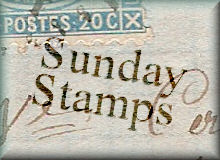 |
| First Day Cover - Issue Date: 04.10.2011 |

An alluvial forest is a hardwood forest found on low levees, ridges and terraces with a high level of underground water within the floodplains of streams and rivers. This type of forest grows in areas that are slightly elevated above floodplain swamp and are usually flooded for a portion of the growing season. Formerly a normal biotope, it has been disappearing with the growing number of river realignment projects.
The largest alluvial forest in the Czech Republic grows at the confluence of the Morava and Dyje rivers. Residual alluvial forests can be found in the area of the confluence of the Labe and Cidlina rivers (Libický Alluvial Forest Natural Reserve), and on the banks or in the headwater area of the Morava and Dyje rivers.
The presence of a stream or river, or a high level of underground water leads to a lower amount of oxygen in the soil and subsequent reduction processes. The products of the processes contribute to the typical bluish colour and special smell of the so-called gley soil.
Primary trees found include poplar (Populus L.), oak (Quercus L.) , ash (Fraxinus L.) , elm (Ulmus L.) , alder (Alnus L.) , willow (Salix L.) , lime tree (Tilia L.) . Shrubs and small trees, such as cherry (Prunus serotina) , honeysuckle (Lonicera) , cornel (Cornel) , viburnum (Viburnum) , elder (Sambucus) , are present at places with more light.
The mix of plants found in alluvial forests depends on the shadow prevailing in the lower layers of the forest. Creepers, such as hop vine (Humulus lupulus) , try to penetrate into the upper layers. Other plants, such as ground ivy (Glechoma hederacea) , bramble (Rubus) , catchweed bedstraw (Galium aparine) , spread by vining stems.
Light-demanding herbs flowering before leaves bud on the surrounding trees give the forest so-called spring aspect. Spring snowflake (Leucojum vernum) , snowdrop (Galanthus nivalis) , lesser celandine (Ficaria verna) , yellow star-of-Bethlehem (Gagea lutea) , starwort (Stellaria holostea) , lungwort (Pulmonaria officinalis) , early-dog violet (Viola reichenbachiana) , hollowroot (Corydalis cava) , are among the herbs most commonly encountered in spring. A mix of grass species and other shadow-demanding herbs such as wild angelica (Angelica sylvestris) , true forget-me-not (Myosotis palustris) , yellow flag iris (Iris pseudacorus) , enchanter's-nightshade (Circaea lutetiana) , European birthwort (Aristolochia clematitis) , moneywort (Lysimachia nummularia) , creeping buttercup (Ranunculus repens) , common comfrey (Symphytum officinale) , common figwort (Scrophularia nodosa) , touch-me-not balsam (Impatiens noli-tangere) , cover the ground in summer.
The patchy mossy underground tends to cover maximum 10% of the forest floor.
Soil fauna in alluvial forests is relatively rare due to the high amount of water in the soil. Earthworms and harvestmen are among the most common species. Amphibians are frequent in wet areas. Birds typical of alluvial forest include yellow throat, different species of warbler, chaffinch, whitwing, robin, starling, stork, silver and night herons, bee eater, buzzard, kite, hawk, falcon, sea eagle.
 I decided to start with the Sunday Stamps Project, maybe i find some stamps from time to time :) This Weeks theme wasn't that hard to fulfill as the third theme from the europa stamps was handicrafts.
I decided to start with the Sunday Stamps Project, maybe i find some stamps from time to time :) This Weeks theme wasn't that hard to fulfill as the third theme from the europa stamps was handicrafts. 



































